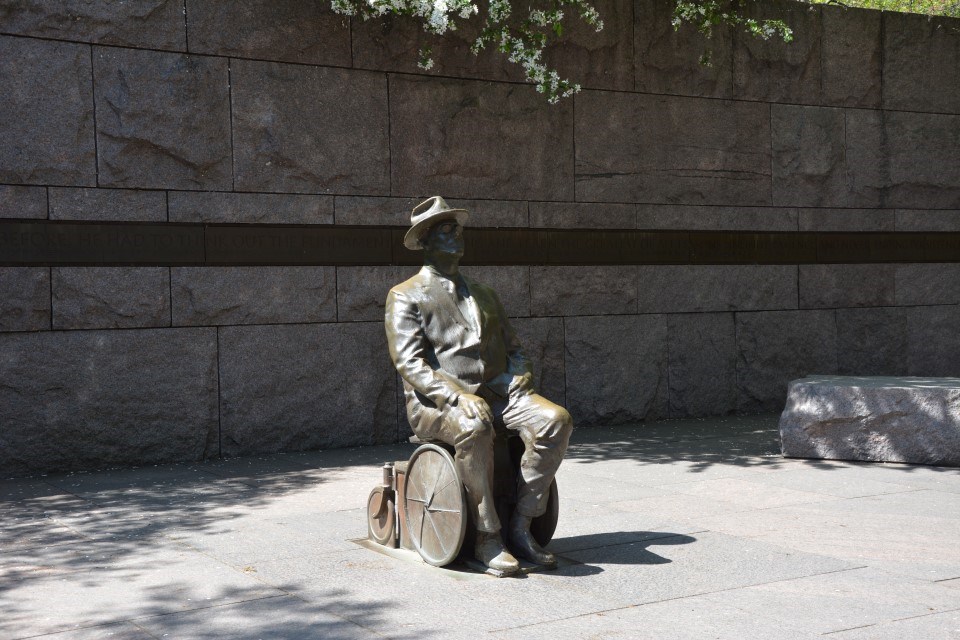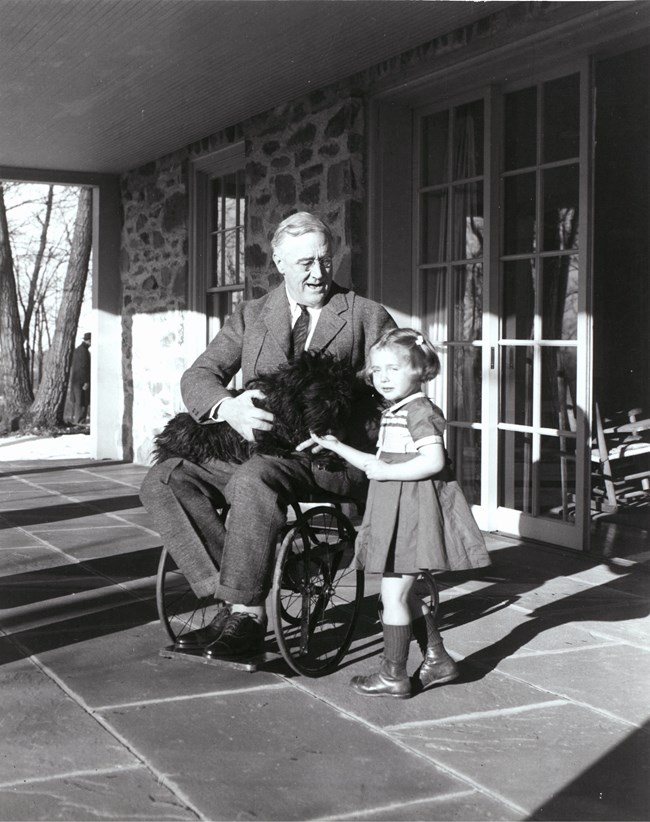Last updated: May 3, 2022
Article
Franklin Delano Roosevelt Memorial - The Prologue Room

National Park Service photo
A master of perception and problem solving, FDR creatively limited the public’s view of him using a wheelchair. He retrofitted the train he took so that he could board on the other side, out of view. At events, he would be seated behind the podium until he needed to speak and then would use carefully disguised handrails and his upper body strength to pull himself up. FDR also pressured the press to never publish images of him in a wheelchair. Of hundreds of thousands of photos taken of FDR, only 4 photos exist that show him in a wheelchair. During his lifetime, the majority of the public remained unaware of the extent of the president’s health complications.
When the Franklin Delano Roosevelt Memorial Commission selected landscape architect Lawrence Halprin to design the memorial in 1974, Halprin and his team had to decide how to address FDR’s disability. Halprin carefully designed the memorial to be accessible for people with all kinds of ability levels, adding in wheelchair ramps even before the American Disabilities Act required them, encouraging people to touch the statues, using fountains to help tell the story both visually and auditory, and by scattering elements of braille into the mural on the New Deal. However, FDR was only shown as most people saw him, with only a hint of his disability. The large statue of Roosevelt by Neil Estern in the third room shows him seated in a chair with small casters. The bas relief in the first room shows President Roosevelt riding in a car at his first inauguration. The team considered that if FDR did not show his disability to the public in his life, the memorial shouldn’t either.

Franklin D. Roosevelt Presidential Library and Museum
On January 10, 2001, the Prologue Room was dedicated, complete with a statue of FDR by sculptor Robert Graham. The statue is life size, at ground level, and depicts FDR seated in a wheelchair of his own design- a kitchen chair modified with tricycle wheels. It is set away from a nearby wall to ensure total access. On the wall is a quote from Eleanor Roosevelt, "Franklin's illness...gave him strength and courage he had not had before. He had to think out the fundamentals of living and learn the greatest of all lessons - infinite patience and never-ending persistence."
